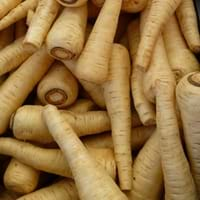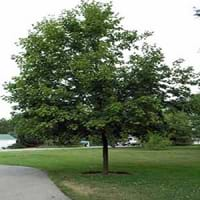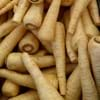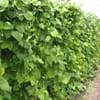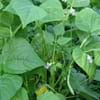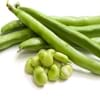Life Span
Biennial and Perennial
Perennial
Origin
Europe, Western Asia
Northeastern United States, North-Central United States
Types
Not Available
Sugar Maple, Norway Maple, Red Maple
Habitat
waste ground, wastelands
bottomlands, Forests, Moist Soils
USDA Hardiness Zone
4-9
4-8
Sunset Zone
A1, A2, A3, H1, H2, 1a, 1b, 2a, 2b, 3a, 3b, 4, 5, 6, 7, 8, 9, 10, 11, 12, 13, 14, 15, 16, 17, 18, 19, 20, 21, 22, 23, 24
1a, 1b, 2a, 2b, 3a, 3b, 4, 5, 6, 7, 8, 9, 10, 14, 15, 16, 17, 18, 19, 20, 21, 22, 23, 24
Habit
Rosette/Stemless
Oval or Rounded
Flower Color
Yellow
Yellow green, Chartreuse
Flower Color Modifier
Bicolor
Bicolor
Fruit Color
Brown, Black
Green, Brown
Leaf Color in Spring
Green
Green, Dark Green
Leaf Color in Summer
Green
Green, Dark Green
Leaf Color in Fall
Green
Yellow, Red, Orange
Leaf Color in Winter
Not Available
Not Available
Leaf Shape
Pinnate
Toothed
Plant Season
Summer
Spring, Summer, Fall
Sunlight
Full Sun
Full Sun, Partial Sun, Partial shade
Growth Rate
Medium
Medium
Type of Soil
Loam
Loam, Sand
The pH of Soil
Neutral
Acidic, Neutral, Alkaline
Soil Drainage
Well drained
Well drained
Bloom Time
Summer
Early Spring, Spring
Tolerances
Drought
Not Available
Where to Plant?
Ground, Pot
Ground
How to Plant?
Seedlings
Seedlings
Plant Maintenance
Medium
Medium
Watering Requirements
Average Water Needs, Do Not over Water, Keep the ground moist but not water-logged
Average Water Needs, Do Not over Water, Requires regular watering
In Summer
Lots of watering
Lots of watering
In Spring
Moderate
Moderate
In Winter
Average Water
Average Water
Soil pH
Neutral
Acidic, Neutral, Alkaline
Soil Type
Loam
Loam, Sand
Soil Drainage Capacity
Well drained
Well drained
Sun Exposure
Full Sun
Full Sun, Partial Sun, Partial shade
Pruning
Remove damaged leaves, Remove dead branches, Remove dead leaves
Remove damaged leaves, Remove dead branches, Remove dead leaves
Fertilizers
All-Purpose Liquid Fertilizer
All-Purpose Liquid Fertilizer
Pests and Diseases
Aphids, Armyworm, Cutworms, Downy mildew, Pitch canker, Red blotch
Red blotch
Plant Tolerance
Drought
Not Available
Flowers
Showy
Insignificant
Flower Petal Number
Not Available
Single
Fragrant Bark/Stem
Yes
No
Foliage Texture
Fine
Medium
Foliage Sheen
Matte
Glossy
Attracts
Butterflies
Bees, Birds
Allergy
Stomach burn
Pollen
Aesthetic Uses
Not Available
Not Available
Beauty Benefits
Blood purifying, Good for skin
Not Available
Environmental Uses
Air purification
Air purification, Nesting sites for birds, Shadow Tree, Wildlife
Medicinal Uses
Aphrodisiac
Tonic
Part of Plant Used
Root
Sap, Tree trunks
Other Uses
Food for animals, Used as a nutritious food item
Edible syrup, Used as Ornamental plant
Used As Indoor Plant
Yes
No
Used As Outdoor Plant
Yes
Yes
Garden Design
Edible, Herb, Vegetable
Shade Trees, Street Trees
Botanical Name
PASTINACA sativa
ACER nigrum
Common Name
Parsnip
Black Maple
In Hindi
चुकंदर
Black Maple Tree
In German
Pastinake
Schwarz Ahorn
In French
Panais
Noir Érable
In Spanish
Chirivía
Negro del árbol de arce
In Greek
Είδος δαυκίου
Μαύρο Maple Tree
In Portuguese
cherivia
Árvore de bordo preto
In Polish
Pasternak
Czarny klon
In Latin
parsnip
White Acer ligno
Phylum
Magnoliophyta
Magnoliophyta
Class
Magnoliopsida
Magnoliopsida
Family
Apiaceae
Aceraceae
Clade
Angiosperms, Asterids, Eudicots
Angiosperms, Eudicots, Rosids
Tribe
Not Available
Areceae
Subfamily
Not Available
Hippocastanoideae
Number of Species
Not Available
Not Available
Season and Care of Parsnip and Black Maple
Season and care of Parsnip and Black Maple is important to know. While considering everything about Parsnip and Black Maple Care, growing season is an essential factor. Parsnip season is Summer and Black Maple season is Summer. The type of soil for Parsnip is Loam and for Black Maple is Loam, Sand while the PH of soil for Parsnip is Neutral and for Black Maple is Acidic, Neutral, Alkaline.
Parsnip and Black Maple Physical Information
Parsnip and Black Maple physical information is very important for comparison. Parsnip height is 15.20 cm and width 7.60 cm whereas Black Maple height is 3,779.52 cm and width 1,219.20 cm. The color specification of Parsnip and Black Maple are as follows:
Parsnip flower color: Yellow
Parsnip leaf color: Green
Black Maple flower color: Yellow green and Chartreuse
- Black Maple leaf color: Green and Dark Green
Care of Parsnip and Black Maple
Care of Parsnip and Black Maple include pruning, fertilizers, watering etc. Parsnip pruning is done Remove damaged leaves, Remove dead branches and Remove dead leaves and Black Maple pruning is done Remove damaged leaves, Remove dead branches and Remove dead leaves. In summer Parsnip needs Lots of watering and in winter, it needs Average Water. Whereas, in summer Black Maple needs Lots of watering and in winter, it needs Average Water.
